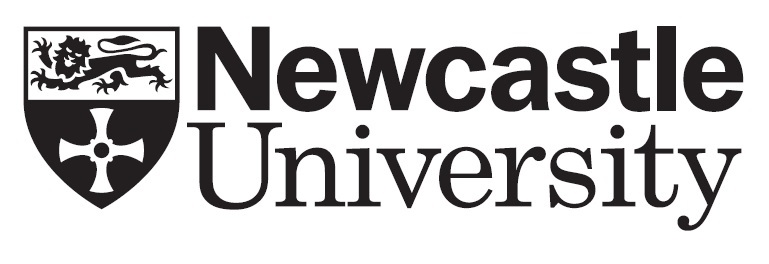Walking on Images
Michael Tymkiw, University of Essex
For millennia, floors have served as an important site for displaying imagery, as evidenced by mosaic pavements, tomb slabs, rugs, and, more recently, floor-based works of fine art. In many cases, human beings have been encouraged to walk on such imagery – a mode of viewing that not only results in direct physical contact with images but also means that a spectator cannot view ground-based images without simultaneously seeing parts of his or her own body. In this respect, a spectator’s body at once completes and interrupts the imagery being viewed.
This session seeks to explore a range of issues broadly related to the theme of walking on images, including the dialogue between a spectator’s moving body and images underfoot; the motivations for making and/or commissioning examples of ‘walkable’ imagery; the interrelationship between figuration and abstraction; and the conceptual and theoretical implications of floor-based imagery for how we write histories of art and visual culture.
Speakers
Landscapes, Cities and the Viewer: Stepping on stones in late antiquity
Irene Gilodi (Kunsthistorisches Institut in Florenz)
‘Tread another Tomb’: Ruskin at Santa Croce
Jeremy Melius (Tufts University)
Rococo Underfoot: Michael Thonet’s parquetry floors for the Stadtpalais Liechtenstein in Vienna
Peter Fox (Independent Scholar)
Boris Anrep’s Mosaics for the Bank of England
Jennifer Adam (Bank of England Museum)
Mirror Mirror on the Floor: Infinity rooms and gravity
Michael Tymkiw (University of Essex)
Aerial Views vs Floor-based Work: Containment and inaccessibility of 21st century horizontal images in the work of Sterling Ruby
Christian Mieves (Newcastle University)
Click here to download this session's abstracts or view below
Landscapes, Cities and the Viewer: Stepping on stones in late antiquity
Irene Gilodi (Kunsthistorisches Institut in Florenz)
Figurative mosaic floors were present in churches, synagogues and secular buildings in considerable numbers in Byzantine and Umayyad-era Jordan and Palestine. However, since most of these floors came to light again only through archaeological excavations, their original context is difficult to reconstruct and an understanding of the relationship between the mosaic artworks and their viewers has proven quite elusive to scholars. Nonetheless, it is clear that these floors – like all floors – were laid to be walked on and a motion on the object itself was key to the perception of their decorations. Notions of the evocative (and indeed at times even symbolic) power of images on floors were certainly present around the time of their production. In a well-known ekphrasis, the marble slabs of the floor of Hagia Sophia in Constantinople are compared by Paul the Silentiary to a stormy sea. Is it possible to suppose the same evocative potential when it comes to figurative floors? Was a ‘bodily/physical reading’ of the picture necessary in order to fully comprehend its decoration? The writings of a later author such as Konstantinos Manasses, who is happy to describe a mosaic as if it were a painting, seem to contradict this reading. However, given the visual organisation of landscapes on Palestinian floors, I propose that a deep interaction between the viewer/walker and the image-space of the mosaics was at play.
‘Tread another Tomb’: Ruskin at Santa Croce
Jeremy Melius (Tufts University)
This paper considers a set of claims about spatial experience and the viewing of art which stem from John Ruskin’s account of the tomb slabs at Santa Croce in Florence. In Mornings in Florence (1875–77), his curious guide to the city’s treasures, the critic reconfigured a well-worn genre. Emphasis fell on an ostentatiously limited itinerary staged as a series of vivid encounters unfolding in real time and space; theoretical considerations would continually be interrupted by the particular, sometimes inscrutable demands of the thing seen. On the book’s first ‘morning’, Ruskin leads his reader to traverse Santa Croce’s ‘sacred field of stones’ and to kneel before the ‘worn face’ of one tomb slab in particular. A transvaluation of values occurs. Attention is displaced from the famous monuments that line the basilica’s walls – Michelangelo’s, Galileo’s – to the anonymous floor-work ‘of the fine time’, trod thoughtlessly underfoot. In that shift, a remarkable spatial and perceptual reorientation takes place, from high to low, vertical to horizontal, general impression to obdurate localised detail. The stance of the viewer is at once reaffirmed by this radical emplacement and undermined, as she is asked to stand atop a siteless site: a threshold between past and present, life and death, where the surface of sculpture slowly gives way to its virtualising depths, a ‘labyrinth of ornamental lines’. The paper seeks to account for Ruskin’s unnerving conjunction of place and placelessness in his text, and to suggest something of its generative potential for the writing of embodied encounters with art.
Rococo Underfoot: Michael Thonet’s parquetry floors for the Stadtpalais Liechtenstein in Vienna
Peter Fox (Independent Scholar)
Michael Thonet’s bentwood chairs have long been recognised as key to the development of modern design, but his adaptation of the technique to floor-based decorative art has received comparatively little attention. In 1843, Alois II, Prince of Liechtenstein, commissioned Thonet to participate in the ongoing renovation of his family’s sprawling palais in central Vienna. Executed with craftsman Carl Leistler under the aegis of architect Peter Hubert Desvignes, Thonet successfully integrated his bentwood technique into sections of the parquetry floors installed in several state rooms. Parquetry, the method of composing repeating geometric patterns with strips of wood, took on a new vogue in European courts following the renovation of Versailles under Louis XIV. Thonet, however, transformed the novel structural utility of bentwood into an inlay material to embellish the hardwood floors, allowing him a wider purview for experimenting with formal effects such as the tension between movement and stasis. His complex decorative programme of sinuous lines resonated with other aspects of Desvignes’ exuberant historicist interior decoration while challenging the strictly orthogonal parquetry floors from interiors of a similar ilk. This paper explores how the modernity of Thonet’s bentwood technique translated into a recumbent pose and how this in turn related to the larger project of resurrecting the Rococo in central Europe at this moment.
Boris Anrep’s Mosaics for the Bank of England
Jennifer Adam (Bank of England Museum)
Inside the Bank of England, there is an extensive scheme of mosaics by Russian artist Boris Anrep (1883–1969), commissioned in the 1920s for the Bank’s newly-built Threadneedle Street headquarters. The mosaics fill the old public entrances to the building and connect them via the main ground floor corridors. In Anrep’s time, these spaces were bustling with both staff and visitors who came to do business in person in the pre-digital age. Today, due to the security restrictions of a modern bank, they are all but inaccessible, and little published.
The mosaics complemented the grandeur of Herbert Baker’s architecture, using an ancient technique to add an aura of history and permanence – highly appropriate for an institution where stability and trust are deeply important. This paper will cover the process of commissioning and creating the work for the Bank of England. It will show how Anrep’s designs illustrated the role of the Bank for its visitors, presenting a history of money in Britain alongside themes of communication and commerce, with hints of the allusive humour common to Anrep’s other work. Finally, this paper will discuss the reception of the mosaics both within the institution and among visitors. Boris Anrep’s mosaics for the Bank of England are an immense, functional work of art. Today they continue to create a distinctive sense of place and purpose within the institution.
Mirror Mirror on the Floor: Infinity rooms and gravity
Michael Tymkiw (University of Essex)
From the mid- to the late-1960s, numerous artists placed mirrors on the floors, walls, and/or ceilings of quasi-immersive environments in order to create the illusion of infinite space – initially Yayoi Kusama, but soon thereafter Lucas Samaras, Luc Peire and Christian Megert, among others. Perhaps not surprisingly, the proliferation of mirrored ‘infinity rooms’ within such a short period of time gave rise to claims of copying among artists. Yet one of the most striking features of these environments is the extent to which the particular surfaces covered by mirrors and their interaction with an installation’s other visual elements alter how a spectator experiences infinite space. To examine the stakes involved in fostering different experiences of infinite space, this paper focuses on Peire’s mirrored environments and their relationship to contemporary works by Kusama, Samaras and Megert. Of particular concern are the diverse experiences that converge around the sensation of defying gravity, which to varying degrees often accompany the act of stepping on a mirrored floor.
Aerial Views vs Floor-based Work: Containment and inaccessibility of 21st century horizontal images in the work of Sterling Ruby
Christian Mieves (Newcastle University)
This paper will explore the extent to which ‘walkable’, floor-based images not only question our understanding of the figure/ground relationship, but the notion of accessibility and the ‘field of vision’ of images in general. By focusing on American artist Sterling Ruby (born 1972), as one of the main case studies, the paper will critically test strategies to deflate traditional categories of floor/ground and wall-based work.
While Ruby’s work is closely linked to the studio floor, through its materiality and as a site of production, his images suggest simultaneously a sense of wide space of ‘indeterminate topographies’ or aerial shots of war zones (see, for example, DEEP FLAG (2015) or TCOM KUWEIT (2015)). Therefore, by conflating floor and aerial views, vertical and horizontal images, Ruby’s work conveys a ‘transversal’ quality by transgressing the ‘agonistic cultural environment’, seeing floor and foot-orientated imagery usually as opposite to wall-based work. By abandoning the ‘fronto-parallel organisation’ of the image, this paper wishes to argue that Ruby’s aerial views and floor-based work likewise deal with a kind of ‘neglect’ through its flattening and distancing which avoids the ‘three-dimensional politics of the worlds’. The strong emphasis in Ruby’s work on horizontal, literally ‘walkable’ images (such as EXHM (2012) or DEEP FLAG (2015), as well as inaccessible aerial views of prison centres (SUPERMAX, 2008) offer an opportunity to evaluate both the incommensurable quality of aerial surveillance vs abstraction and the contingency of ‘walkable’ images and its base. Furthermore, by ‘looking down’, Ruby’s work suggests a radical redefinition of the field of vision and highlights an embeddedness of the object that points finally towards a bodily experience of the viewer.
|
|
|
|
|
|
Supported by
Conference Sponsors
![]()
Sponsored by
ASSOCIATION FOR ART HISTORY
![]()
Terms & Conditions
![]()


